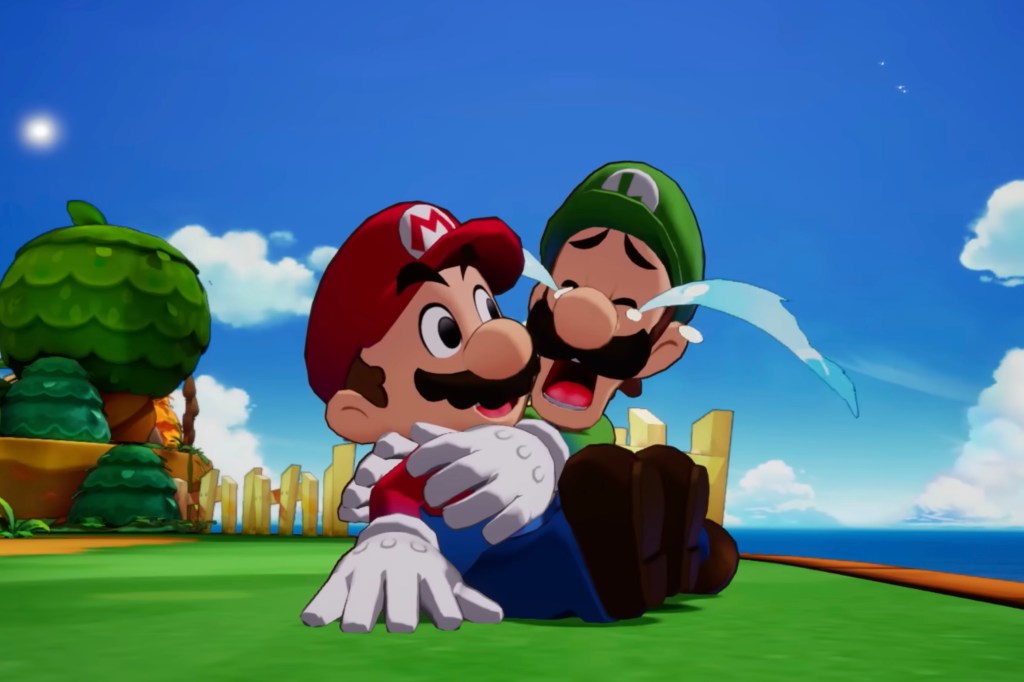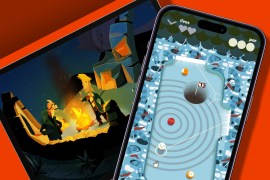Mario & Luigi: Brothership review – my chemical bromance
The moustachioed brothers sail away on a new RPG adventure

Stuff Verdict
Fun battles and sibling special moves make Brothership one of the best Mario RPGs in ages.
Pros
- Charming and expressive art style
- Engaging and challenging action-based battles
- Fun Bros Moves
Cons
- Making preemptive attacks can be annoyingly fiddly
- Some pacing issues
Nintendo has been on a remake kick recently. First we got a Switch revival of oddball SNES release Mario RPG, then the return of long-overdue cult classic Paper Mario: The Thousand Year Door. But what about something new? Thank goodness, then, for Mario & Luigi: Brothership.
The spinoff series, which traditionally lived on Nintendo’s handhelds, hadn’t seen a new entry in nearly a decade. Fans assumed it had been put out to pasture once original developer AlphaDream went bankrupt in 2019. Now under the stewardship of Octopath Traveller co-creators Acquire, the plumber brothers are finally back for another adventure – and in glorious cel-shaded HD to boot.
Crucially this isn’t just a remake, like the last two entries on the Nintendo 3DS, but a brand new release that’s purpose-built for the Switch. That would be good news by itself in a year where Nintendo has largely churned out rereleases, but is better yet when Brothership stands toe-to-toe with, and even improves on, the originals.
Lighthouse family





Brothership sees Mario and Luigi whisked away from the Mushroom Kingdom to another world. Originally a single continent, Concordia has fractured into different islands all adrift on a wide ocean; you’ll be using the part-landmass, part-vessel Shipshape Island to sail between each one, reaching their lighthouses to reconnect the lot, one island at a time.
The setup almost reminds me of Gamecube-era Zelda Adventure Wind Waker (which, quite frankly, is still due a Switch port). Different islands make up towns and dungeons – or sometimes both – and you sail between each one. This isn’t an open world, though – you’re just plotting courses for different ocean currents.
Brothership‘s colourful cel-shaded art style is another similarity, making it stand out from both Mario’s other 3D incarnations and a nice transition from the series’ sprite-based origins. There’s no dialogue – just plenty of Italian-accented gibberish – so the brothers get by with expressive animations. Luigi provides much of the comic relief, while Concordia’s inhabitants (with faces resembling plug sockets) are equally charming.
Some familiar faces appear over the course of the story, including Princess Peach in a non-playable role (hey, at least this time she only gets ‘kidnapped’ as an optional tactic), as well as Bowser and his minions. The main threat lies in Concordia’s world, where its chief villain is amassing an energy with the power to make victims isolate themselves.
It’s all family-friendly fare – don’t go expecting any slyly subversive humour like in Thousand Year Door – but each of the dozen islands is bursting with character. You’re not just blasting out of a cannon to an island, reaching the lighthouse and then onto the next one: you might encounter a disco dancer who’s lost his groove because he’s out of hair gel; play hide-and-seek with a bunch of kids; or try and get involved in some detective work.
Bro Controller





True to its name, Mario and Luigi stick together for virtually the whole game. Their partnership is integral to how you explore Concordia, solve puzzles, and fight. Each brother has his own button for actions, just like previous series entries, such as pressing A to make Mario jump and B for Luigi. It might be tricky for newcomers to get used to, especially as you still need to select an enemy you want to attack with the A button first.
The action-based battles are reminiscent of Paper Mario, but Brothership’s mechanics – be they regular attacks, cinematic specials, or even dodging and countering enemy blows – feel a lot more involved. With a growing arsenal of moves and lots of enemy types who don’t just repeat the same patterns, you’re consistently kept on your toes so that battles aren’t just mindless grinds.
Learning to dodge and counter might be too tricky for younger players, so there’s also the option to just guard and absorb a little damage, which is better than outright messing up. Later on you can also equip plugs that enhance some moves, including making countering easier. But with only limited plug sockets, and the need to recharge after being used a certain number of times, you can’t rely on them completely.
As with other turn-based RPGs, you can also jump or hammer enemies visible on the map to get a preemptive attack at the start of a battle. However, I found this annoying to do in Brothership, where my jumps would either just miss landing on the enemy or my hammer would be just out of reach. Worse, some enemies have lightning reactions if they notice you, and because battles initiate upon contact, I was often having the tables turned on me where they got to attack first.
No Mario is an island





Brothership‘s unique and visually hilarious Bros Moves, which spring from some harebrained leaps of logic on Luigi’s part, can be used for puzzles and exploration. One has the brothers spinning in the air so fast that they hover like UFOs, allowing them to cross gaps; another has them rolling together into a ball, which can even later use a spin-dash just like a certain blue hedgehog.
Bouts of Luigi Logic can occur during boss fights that introduce last-minute mechanics, and during puzzles where they’re implemented a little less interestingly. It’s still inventive for the moments the brothers are required to split up yet still work together, but some feel like you’re waiting for the predictable gag to happen.
Bros Moves are nonetheless an incentive for returning to previous islands and exploring areas you couldn’t reach before. Plenty of side quests also pop up to lure you back, with some expiring if you progress too far with the main story. It’s structured that you’ll have downtime to revisit islands while you sail to new ones, using warp pipes to fast-travel to previously connected locations.
Sailing is in real-time, so it’s no uncommon to finish a side quest and discover Shipshape Island has missed your next destination, and you’re forced to sail around the current to get back to it. The issue is addressed eventually when you’re given the option to greatly increase the sail speed.
When revisiting islands isn’t optional but part of the story, it can also feel like unnecessary padding, especially in the latter half of the game. Yet it’s easy to overlook these moments when there are meaningful changes to the islands that justify returning. When you compare with the pacing issues of decades older games like Thousand Year Door, Brothership is still a meaningful leap forward.
Mario & Luigi: Brothership verdict

As the last new first-party title of 2024, Mario & Luigi: Brothership is another success from Nintendo. Even after the impossible peaks of last year’s Tears of the Kingdom and Super Mario Bros. Wonder, there’s still plenty to give in the Switch’s twilight, as franchises that had been ignored for so long are having their time to shine and knocking it out the park.
Better yet, when the Mario & Luigi series looked like it was doomed to fade away, it’s been re-energised with brotherly love and care, as well a good dose of slapstick hijinks. The Paper Mario series still has the better jokes, but Brothership’s gameplay is so engaging and inventive that it can count itself among an already enviable list of outstanding RPGs this year.
Stuff Says…
Great bros with great moves and battles make for one of the best Mario RPGs in ages.
Pros
Charming and expressive art style
Engaging and challenging action-based battles
Fun Bros Moves
Cons
Bad stuff 1
Bad stuff 2



